City Directories and History: The general assembly of South Carolina authorized the Town Council of
 Winnsboro “to build and erect a market house in the center of Washington Street – the said Market House shall not be of greater width than thirty feet.” This act was adopted December 19, 1833. The clock was added in 1837. The works were made Alsace, France, and brought from wagon from Charleston, South Carolina. The Fairfield Chamber of Commerce is headquartered in this building. [Courtesy of the Chamber of Commerce]
Winnsboro “to build and erect a market house in the center of Washington Street – the said Market House shall not be of greater width than thirty feet.” This act was adopted December 19, 1833. The clock was added in 1837. The works were made Alsace, France, and brought from wagon from Charleston, South Carolina. The Fairfield Chamber of Commerce is headquartered in this building. [Courtesy of the Chamber of Commerce]
Informative link: National Register
In 1785, the General Assembly of South Carolina authorized the establishment of a public market in the town of Winnsborough, Corner and Washington Streets. This market house was a square, wooden building, painted yellow, and was topped with a belfry.
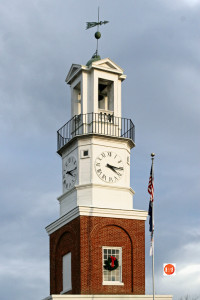
Images of the historic town clock taken in 2006 by photographer Bill Segars.
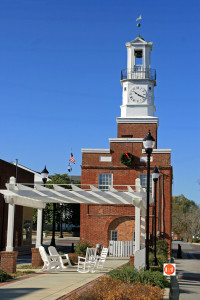
Some years later, probably between 1820 and 1930, this market house was sold to Robert Cathcart for a goodly sum, Mr. Cathcart at the same time, donating to the town his old duck-pond, a small piece of land in the middle of Washington Street, as a site for a new market house. The town council accepted the land and petitioned the legislature in due time for authority to erect the new market-house and town clock. The legislature gave this authority, “Provided the building be no more than 30 feet in width.” So the erection of our town clock was begun soon after this, probably in 1833. The works for the new clock were ordered by Colonel William McCreight who was Intendent (Mayor) of the town in 1837, from Alsace, France. They were imported to Charleston by sailboat, and hauled to Winnsboro in wagons. Varied and interesting-if not authentic are the reports of the journey from Charleston. One old Negro, Adam Blake (who is remembered by residents today) declared that it took 50 wagons to do the hauling! This statement is inconsistent with the belief of some familiar with local history that the works are wooden. Whether of wood, or of metal, the works are undoubtedly superior, for the clock has run continuously for 100 years, the longest continuously running clock in the United States.
The town clock bell was French made also, and is said to have had silver in its composition. Its tone, we are told, was beautiful and silvery. This bell did good service until 1895; during a fire that year two young men were ringing it so vigorously that it cracked and was sent to Philadelphia to J. McShane for repairs. When after some delay it was returned and sounded for the first time, the tone was so different from the old tone that doubt was expressed immediately as to its being the original bell. In 1875 it was found necessary to repair the clock tower, and the present tower was erected. The carpentry work was done by a Negro carpenter of Winnsboro, John Smart.

Winnsboro, S.C., in 1908. Courtesy of the Fairfield Co. Museum Collection
The old public market occupied the ground floor of the town clock and had a bell of its own. Its tone was not so silvery as that of the clock, but was a very welcome one when its ringing proclaimed to the villagers that fresh meat was to be had at the market. (It is interesting to learn that this was an old custom, not peculiar to Winnsboro.) One who was a visitor to the Sesqui-Centennial Exposition in Philadelphia, in a description of the old market house there, writes of the recorded ringing of the bell when a boat arrived up the river bringing good things to eat from England and the tropics. When the curfew law prevailed the old market bell tolled the curfew at 9 o’clock every evening. [Our Heritage Book]
See the Built of Brick Jaunt – Driving Tour
Also see link: Fairfield County History / Sites and Structures
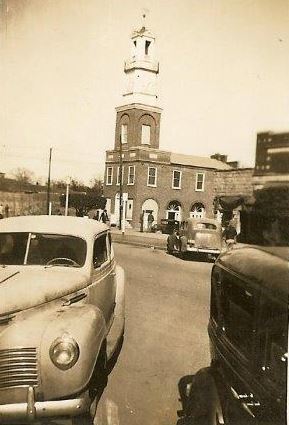
The Winnsboro City Clock and Tower in the 1940s. Courtesy of the FCHS and Museum.
Stay Connected
Explore history, houses, and stories across S.C. Your membership provides you with updates on regional topics, information on historic research, preservation, and monthly feature articles. But remember R&R wants to hear from you and assist in preserving your own family genealogy and memorabilia.
Visit the Southern Queries – Forum to receive assistance in answering questions, discuss genealogy, and enjoy exploring preservation topics with other members. Also listed are several history and genealogical researchers for hire.
User comments welcome — post at the bottom of this page.
Please enjoy this structure and all those listed in Roots and Recall. But remember each is private property. So view them from a distance or from a public area such as the sidewalk or public road.
Do you have information to share and preserve? Family, school, church, or other older photos and stories are welcome. Send them digitally through the “Share Your Story” link, so they too might be posted on Roots and Recall.
Thanks!
User comments always welcome - please post at the bottom of this page.


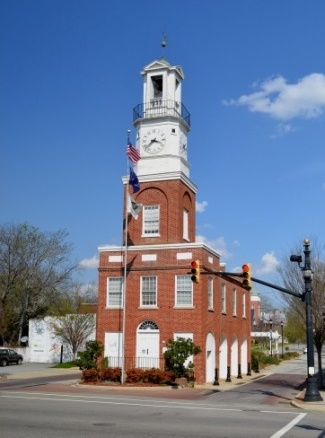
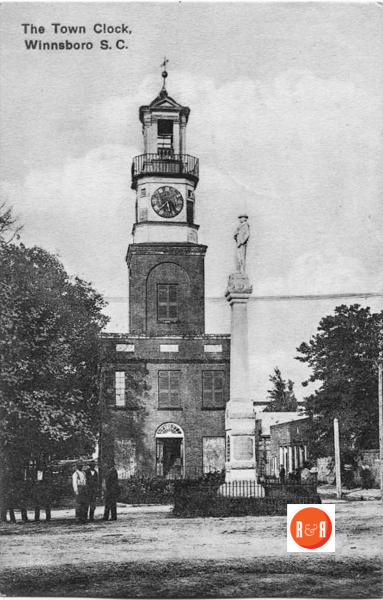

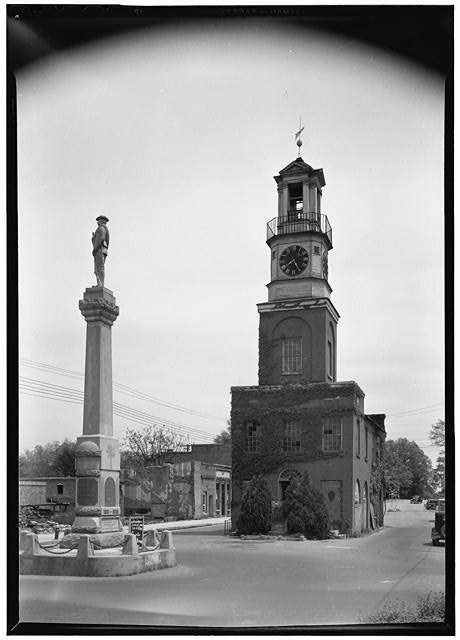





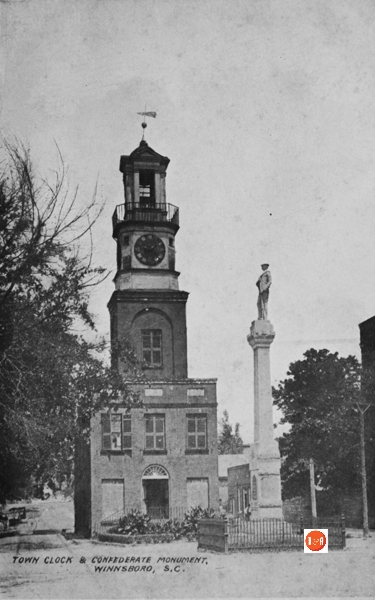





A great story, I wonder if there is a record of when the Confederate Monument was removed, by whom, and why? One similar to this one still stands on a main thoroughfare in Old Town Alexandria, Virginia.
We hope that some of R&R’s viewers will help answer these questions. And yes, it does seem that many of this same style monument was repeatedly used throughout the nation.
The Confederate Monument was moved to its present location in 1962. See R&R post https://www.rootsandrecall.com/fairfield-county/buildings/confederate-monument/ It stands near the corner of Hudson St and Zion St on the Mount Zion Campus. I would assume that the monument was moved to allow for better flow of traffic, as I think the original location might have impeded traffic through downtown.